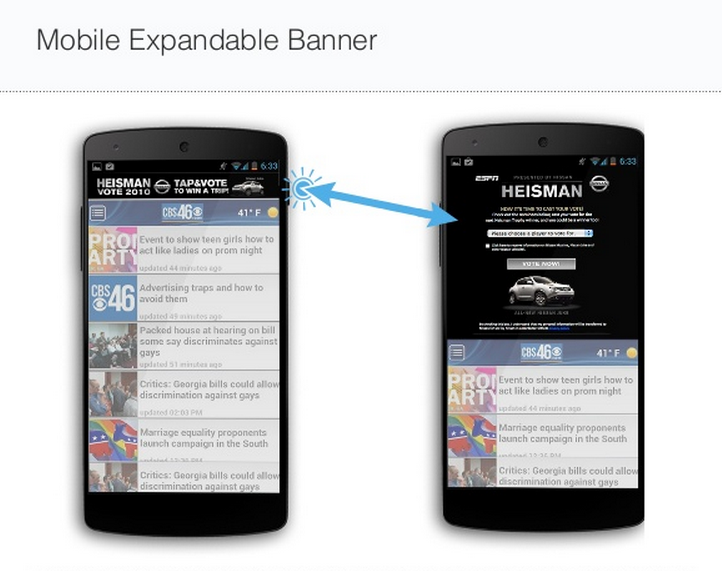Fuel campaign performance with laser-focused targeting

Have you ever noticed those ads that pop up just as you were thinking about the service/product they promote? How about the ads that start showing up on every website or app you use to the point of being annoying?
Retargeting ads have become pretty common with many marketers turning to them to get more sales, engagement and installs. This also means that there are some great marketers running optimized retargeting campaigns … and then there are some that are not so great.
So what do you need to know in order to run amazing retargeting campaigns for your mobile app?
Retargeting for desktop is already a mature form a marketing. It’s also very simple - visitor visits your site, retargeting cookie is added to the visitor’s browser, ads start following the visitor as he browses.
Mobile is a little different. For starters, cookies are rarely used to identify the visitor since they don’t work with apps. Most identification is done through the device or using an ad tracking platform like AppsFlyer.
Mobile retargeting is used most often for the following 3 scenarios:
Here are 11 tips to help you create amazing retargeting campaigns for your mobile app:
The people using your app have very different profiles based on demographics, how and why they downloaded your app, how often they use your app, etc. Each user has his or her own needs and expectations, so putting everyone into the same campaign with the same messaging and goals doesn’t make sense.
To get better campaign performance, try segmenting your retargeting campaigns by where users are in the purchase or app lifecycle.
Mobile app purchase lifecycle via Xoriant
Every campaign has its conversion goal and the metrics necessary to properly analyze the conversion:
You need to decide on the right messaging or offer that fits perfectly with your retargeting campaign segment and goal.
A good idea is to create user personas to help craft a message that connects with your audience.
Shopify has a great overview of developing buyer personas for better marketing.
4. Know the Ad Creatives Best Practices
Well designed ads get high conversion rates. It’s very important that you design your ad creatives with the best practices in mind and with a good dose of creativity.
Some great resources check out:
Don’t forget that your call-to-actions are extremely important. Unbounce has some great advice for your CTA, such as:
Deep links are links for your ads that lead to a specific page within your app (ex: in-app landing pages). There are “basic” deep links and there are newer, “smart” deep links.
Both types will link to a specific in-app landing page and both have a fallback of sending the clicking user the app store to download your app if it isn’t installed on the user’s device. The difference is that “smart” deep links will launch to your in-app landing page after installation, while “basic” deep links will just launch to the app’s home page.
An example of how “smart” deep links work
In-app landing pages increase conversion rates since they’re built to convert users who clicked through the ad. For this reason, it’s very important that you use “smart” deep links to make sure all users reach the in-app landing page and increase your conversion rates.
6. Choose the Right Vendor
With mobile retargeting, you’re not just retargeting ads to an app user, but to a mobile device user. This means that you want to be able to place ads in the two platforms mobile users access on their device: mobile apps and the mobile web.
When choosing a retargeting vendor, make sure to choose one who can place ads on both.
You need to track your ads in order to have the data needed for analyzing campaign performance.
The best practice is to choose a good ad measurement platform that can easily track your installs, retention and revenue - and also integrates into and communicates with your retargeting advertising vendor.
It’s also a good idea to choose only one ad vendor so that all your data is one place, making it easier to segment users, test ads and analyze campaigns.
There is no magic number for how many ad impressions your audience should see. It really depends on the types of users you have, your app and your offer.
Start with what you believe to be on the low side of reasonable ad impression frequency and scale up until ad performance stops improving.
Keep testing messaging, CTAs, creatives, offers and frequency in an organized and strategic manner.
It’s important to have a testing strategy in place and to know in advance what you want to learn from your tests.
In-app landing pages are crucial to your campaign ROI. These are the pages that your app launches to after a user clicks/taps on ad or on the first launch after installing the app.
When creating your in-app landing pages, keep in mind these tips:
Once you find something that works, double down on it. Keep creating more ads with similar messaging or design and focus on making incremental improvements.
You should have a fully-optimized retargeting campaign for your app by following these tips. Mobile retargeting is still a relatively new space and there are new methods being created every day. What methods do you use to optimize your campaigns?
About the author:
Billy Attar is a marketer addicted to all things tech, staring at his various monitors too long and coffee. You can catch up with Billy on Twitter at @billyattar or follow AppsFlyer at @AppsFlyer.
Register to our blog updates newsletter to receive the latest content in your inbox.